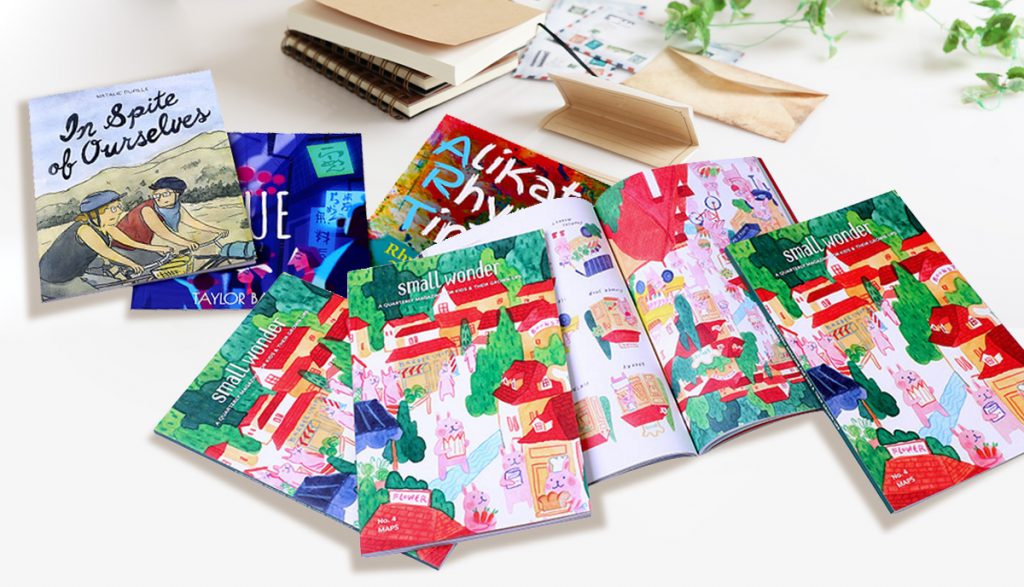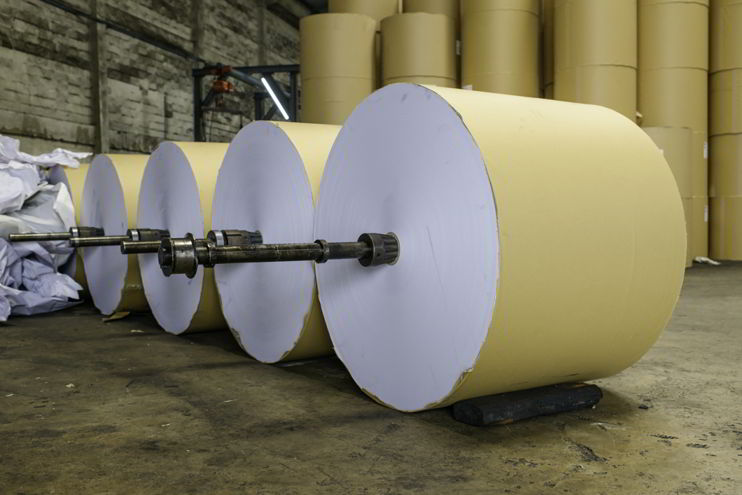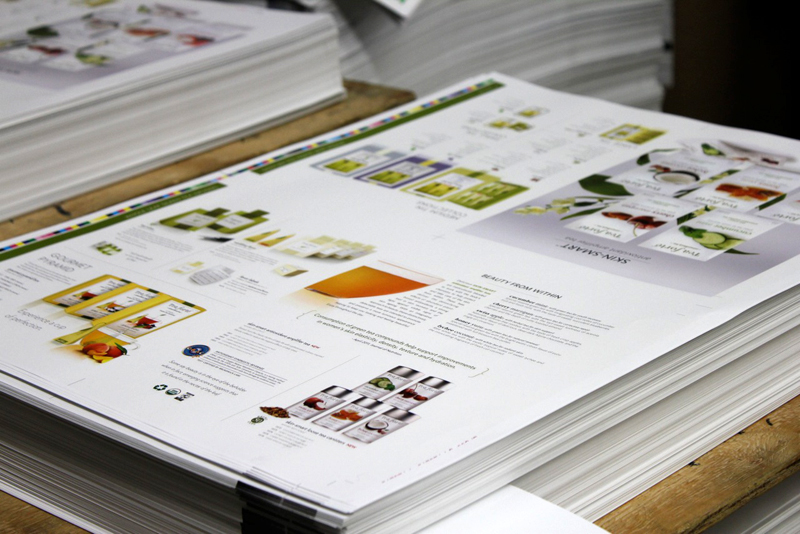Papiery do druku offsetowego: Jakie są kluczowe cechy?
Kompletny przewodnik po papierach do druku offsetowego
Druk offsetowy jest szeroko stosowaną techniką druku, która polega na przenoszeniu farby z płyty na papier za pomocą gumowego cylindra. Jednym z kluczowych elementów tego procesu jest wybór odpowiedniego rodzaju papieru. W tym przewodniku omówimy różne aspekty papieru do druku offsetowego, w tym jego kluczowe cechy, rodzaje i popularne rozmiary.
Czym są papiery do druku offsetowego?
Papier do druku offsetowego to specjalnie zaprojektowane papiery używane w litografii offsetowej, popularnej metodzie drukowania różnych materiałów, takich jak książki, czasopisma, broszury i inne. Są to Papiery są zaprojektowane tak, aby spełniać wymagania offsetu zapewniając wysoką jakość i wydajność druku.
Kluczowe cechy papieru do druku offsetowego
Druk offsetowy papiery posiadają kilka kluczowych cechy, które czynią je idealnymi do litografii offsetowej. Cechy te obejmują:
- Jasność ISO: Papiery offsetowe mają zazwyczaj poziom jasności powyżej 80%, zapewniając wyraźne i żywe wydruki.
- Gramatura: Gramatura papierów offsetowych waha się od 40 do 300 gramów na metr kwadratowy (gsm). Wybór gramatury zależy od konkretnych potrzeb drukowania i pożądanej trwałości.
- Rozmiary: Papiery offsetowe mają wysoki rozmiarOznacza to, że zostały one pokryte specjalną powłoką odporną na wilgoć i zwiększającą absorpcję atramentu.
- Wewnętrzne klejenie: Dobre klejenie wewnętrzne zapewnia, że papier może wytrzymać naprężenia związane z procesem drukowania bez rozdzierania lub rozrywania.
- Wytrzymałość powierzchni: Papiery offsetowe mają mocną powierzchnię, umożliwiającą czyste i precyzyjne przenoszenie atramentu.
Rodzaje papieru do druku offsetowego
Dostępnych jest kilka rodzajów papieru do druku offsetowego, z których każdy ma swoje unikalne właściwości i zastosowania. Najpopularniejsze rodzaje obejmują:
- Papier Bond: Papier Bond jest popularnym wyborem do codziennego drukowania w biurze. Jest niepowlekany i zapewnia dobrą absorpcję atramentu.
- Papiery powlekane: Papiery powlekane występują w dwóch głównych odmianach: błyszczącej i matowej. Błyszczący papier powlekany zapewnia gładkie i błyszczące wykończenie, dzięki czemu nadaje się do broszur, ulotek i okładek czasopism. Matowy papier powlekany oferuje bardziej stonowane wykończenie, idealne do zastosowań, w których pożądany jest subtelny połysk.
- Papiery niepowlekane: Niepowlekane papiery mają naturalną, teksturowaną powierzchnię, dzięki czemu idealnie nadają się do projektów wymagających łatwej czytelności i zapisu. Są one powszechnie stosowane w gazetach, książkach i wewnętrznych stronach czasopism.
- Papiery specjalne: Papiery specjalne obejmują papiery teksturowane, metalizowane i kartonowe. Papiery te oferują unikalne efekty wizualne i dotykowe, dzięki czemu nadają się do wysokiej klasy projektów drukarskich i na specjalne okazje.
Wybór odpowiedniego papieru do druku offsetowego dla danego projektu
Wybór odpowiedniego papieru do druku offsetowego ma kluczowe znaczenie dla osiągnięcia pożądanej jakości i trwałości druku. Oto kilka czynników, które należy wziąć pod uwagę przy Wybór papieru do druku offsetowego:
- Przeznaczenie: Zastanów się nad przeznaczeniem projektu do druku. Czy jest to książka, ulotka, broszura czy coś innego? Różne rodzaje papieru nadają się do różnych zastosowań.
- Budżet: Określ swój budżet i znajdź papier, który mieści się w ramach Twoich ograniczeń kosztowych. Pamiętaj, że tańszy papier może pogorszyć jakość druku.
- Pożądany rezultat: Zastanów się, jaki wygląd i styl chcesz osiągnąć. Potrzebujesz żywych kolorów czy bardziej stonowanego wykończenia? Wybierz papier, który odpowiada twoim celom estetycznym.
- Gramatura i grubość: Gramatura papieru wpływa na jego trwałość i atrakcyjność wizualną. Cięższe papiery są trwalsze, podczas gdy lżejsze są łatwiejsze w dystrybucji.
- Tekstura: Tekstura papieru wpływa na jego efekt wizualny i czytelność. Gładkie papiery są idealne do wyraźnego tekstu, podczas gdy papiery teksturowane dodają wizualnego zainteresowania.
- Kolor i powłoka: Weź pod uwagę kolor papieru i to, czy ma on być powlekany czy niepowlekany. Papier powlekany zwiększa żywość kolorów, podczas gdy papier niepowlekany pozwala na łatwe pisanie.
- Krycie i jasność: Wyższa nieprzezroczystość papieru zmniejsza prześwitywanie, podczas gdy jasność wpływa na wygląd kolorów. Wybierz papier, który odpowiada Twoim konkretnym potrzebom drukowania.
- Zgodność z atramentem: Upewnij się, że papier jest kompatybilny z rodzajem używanego atramentu, aby zapobiec rozmazywaniu lub blaknięciu.
Popularne rozmiary papierów do druku offsetowego
Papiery do druku offsetowego są dostępne w szerokiej gamie rozmiarów, aby zaspokoić różne potrzeby związane z drukowaniem. Najpopularniejsze rozmiary obejmują:
- Arkusze dla rodziców: Arkusze nadrzędne to duże, wstępnie przycięte kawałki papieru zaprojektowane tak, aby pasowały do wielu stron lub kart. Standardowe rozmiary, takie jak 8,5" x 11", są opłacalnymi opcjami dla wielu zastosowań.
- Niestandardowe rozmiary: Drukarki offsetowe mogą przycinać papier do niestandardowych rozmiarów, co pozwala na większą elastyczność w projektach drukowania. Przedyskutuj konkretne wymagania dotyczące rozmiaru z drukarką.
Podsumowanie
Papiery do druku offsetowego odgrywają kluczową rolę w powodzeniu każdego projektu druku offsetowego. Zrozumienie kluczowych cech, rodzajów i rozmiarów papierów do druku offsetowego pozwala podejmować świadome decyzje przy wyborze odpowiedniego papieru do konkretnych potrzeb. Należy wziąć pod uwagę takie czynniki, jak przeznaczenie, budżet, pożądany rezultat, gramatura, tekstura, kolor, powłoka, gładkość, nieprzezroczystość, jasność i kompatybilność z farbami. Dzięki odpowiedniemu papierowi do druku offsetowego można uzyskać wysokiej jakości i oszałamiające wizualnie wydruki.
Najczęściej zadawane pytania dotyczące papieru do druku offsetowego:
Czym są papiery do druku offsetowego?
Aby zrozumieć papiery do druku offsetowego, ważne jest, aby wiedzieć, że są one specjalnie zaprojektowane do litografii offsetowej, zapewniając wysokiej jakości i wydajne wydruki.
Kluczowe cechy papieru do druku offsetowego
Papier do druku offsetowego charakteryzują się kluczowymi cechami, takimi jak jasność ISO, gramatura, rozmiar, wewnętrzne wiązanie i wytrzymałość powierzchni, niezbędnymi do uzyskania najwyższej jakości wyników w litografii offsetowej.
Rodzaje papieru do druku offsetowego
Kiedy odkrywanie Rodzaje papieru do druku offsetowego, takie jak papier bond, papier powlekany, papier niepowlekany i papiery specjalne, z których każdy ma unikalne właściwości odpowiednie do różnych zastosowań.
Wybór odpowiedniego papieru do druku offsetowego dla danego projektu
Proces wyboru odpowiedniego papieru do druku offsetowego obejmuje uwzględnienie takich czynników, jak przeznaczenie, budżet, pożądany rezultat, gramatura, tekstura, kolor, powłoka, nieprzezroczystość, jasność i kompatybilność z tuszem.
Podsumowując, papier do druku offsetowego jest niezbędny do uzyskania wysokiej jakości wydruków. Kluczowe znaczenie ma zrozumienie rodzajów i rozmiarów papieru. Przy wyborze papieru należy wziąć pod uwagę takie czynniki jak gramatura i wykończenie. Właściwa obsługa i przechowywanie zapewniają optymalne wyniki. Rozwiązywanie problemów z papierem jest kluczem do udanego drukowania. Trzymaj się najlepszych praktyk, aby uzyskać najwyższej jakości wydruki. Udanego drukowania!





